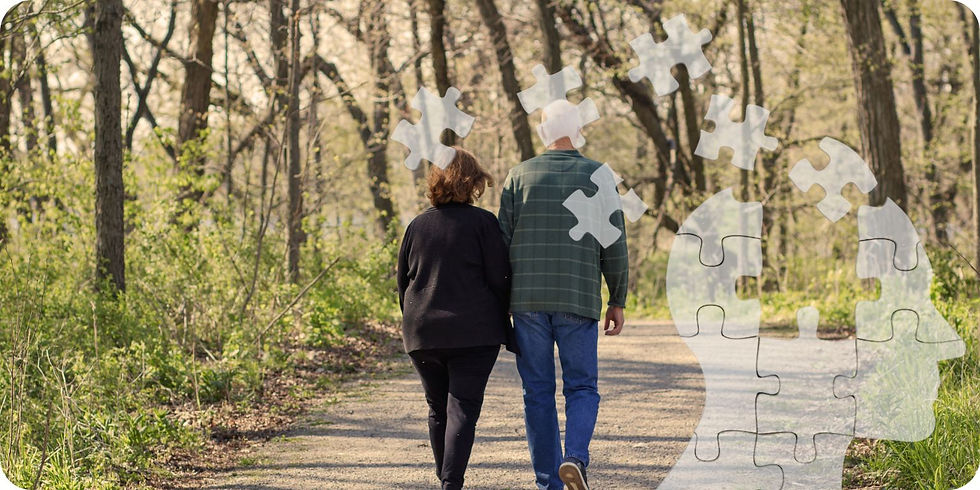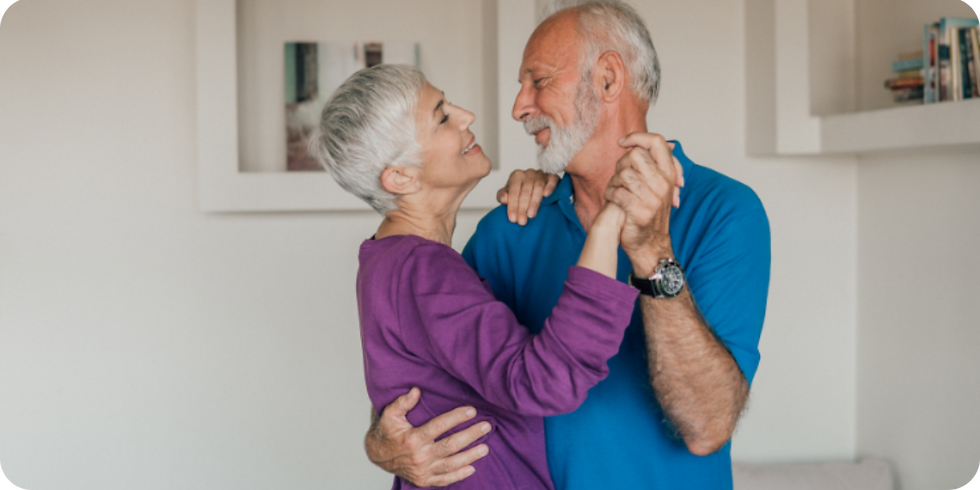The Benefits of Exercise as We Age- For People who Want to Keep Active, Mobile, and Healthy
- Brian Cassel

- Mar 14, 2024
- 6 min read

Discover the benefits of exercise as we age for people who want to keep active, and learn how to safely exercise leading up to, and into retirement and beyond.
Staying physically active is key as people get older. However, exercise as we age can be daunting, and whilst struggling with joint pain, stiffness, and poor mobility- it can seem like an impossible task.
Here at DSMC we work with lots of people who want to keep active leading up to, and into their retirement, and we understand the worries that you may have.
You may be scared of worsening injuries that you’ve suffered with for years, resulting in the need for surgery or becoming reliant on medication to cover up pain.
You might feel embarrassed about starting exercise because you feel unfit and worry about hurting yourself if you joined an exercise class, or gym.
You could even think it’s not worth the hassle because when you have tried to exercise in the past, it has just stressed you out, and left you feeling sore despite making no progress.
If this sounds like you, or someone you know, this blog will outline the benefits of exercise for people who want to keep active, while also giving some advice on how to exercise safely so you can feel, healthier, and with more energy to keep up with your friends and family during weekend activities.
Reduce the Impact of Aging and Memory Loss
A massive fear of many people as they age is memory loss and losing their mental capacity, leaving them unable to take care of themselves or unable live independently in their own home. A major benefit of exercise as we age is that it reduces the impact of aging and memory loss.
These benefits can be gained through strength training, moderate cardiovascular exercise, or higher intensity interval training.
Lower Fall Risk

Another worry as we get older is that we might fall and injure ourselves.
Common injuries sustained during a fall are to the hip, knee, or ankle. Not only can this create physical damage to the muscles, bones, and joints, but if this happens to you, it can really wreck your confidence.
After a fall, it’s understandably very common for people to avoid activities that could result in another fall. However, this often leads to becoming more and more inactive, which reduces strength and balance further. Unfortunately, from a social and psychological impact, it can lead to isolation.
Socialization

People may enjoy the social aspect that can come from joining a local health club or gym. Often, there will be people of similar ages and who share the goal of becoming more active and healthier who can become friends or workout buddies. In some locations, there may be certain classes that are tailored towards those with particular injuries or age groups such as Pilates for over 50s, aqua aerobics (which is a great low impact form of exercise for those with injuries), or Parkinson's group exercises.
Reduced Belly Fat
Exercise, is an integral part of tackling the problem of central obesity (commonly known as ‘belly fat’).
As we age, fat distribution can shift, with more fat settling in the belly region which leaves us with a heightened risk for heart disease more than general obesity, and also feeling less attractive and less confident.
General Enjoyment in Life

People who choose to join a health club or gym will find that they have access to a wide range of equipment that can make exercise more varied and enjoyable. A big obstacle for lots of patients who want to keep active, but can’t get into exercise, is that they don’t enjoy what they are doing. However, when asked, they do the exact same thing every time they exercise (such as go on an exercise bike), which naturally will become boring over time. By changing your workouts, you are able to keep them entertaining and if you enjoy what you are doing, you are far more likely to stick to it.
Another fantastic way to exercise is to find a sport that you enjoy. Even though this isn’t what some people may think of as traditional exercise (such as running on a treadmill), it still gives your body a workout and can help you keep active as you age. Bowling, golf, tennis, or pickleball can be a great way to make new friends and stay fit and healthy in retirement.
Common Question: "Is it safe for older people to exercise?"
People who choose to join a health club or gym will find that they have access to a wide range of equipment that can make exercise more varied and enjoyable. A big obstacle for lots of patients who want to keep active, but can’t get into exercise, is that they don’t enjoy what they are doing. However, when asked, they do the exact same thing every time they exercise (such as go on an exercise bike), which naturally will become boring over time. By changing your workouts, you are able to keep them entertaining and if you enjoy what you are doing, you are far more likely to stick to it.
Another fantastic way to exercise is to find a sport that you enjoy. Even though this isn’t what some people may think of as traditional exercise (such as running on a treadmill), it still gives your body a workout and can help you keep active as you age. Bowling, golf, tennis, or pickleball can be a great way to make new friends and stay fit and healthy in retirement.
Common Question: "How often should we exercise?"
As you age, you might have noticed that it takes you a lot longer to recover from exercise, and little injuries can take longer to heal.
Therefore, it’s generally a good idea for people to exercise less strenuously and more often, as opposed to doing big bouts of strenuous exercise in one go. This will enable your body to recover, rather than leaving you with sore muscles and stiff joints for days after you exercise.
We also recommend that people gradually increase the amount of exercise they do over time. This is very important to reduce the risk of injuries.
So, if you don’t exercise at all, try to exercise for a short amount of time, twice a week to start with – don’t jump straight in with trying to exercise an hour a day, every day of the week. Over time, you can certainly build up to more exercise.
The Best Exercise as We Age
The forms of exercises for aging people we would recommend varies greatly on everyone’s situation, goals and preferences.
However, as a general rule, and what we have found works best for aging people who want to keep active in retirement is a mixture of moderate cardiovascular exercise, such as running, cycling, brisk walking, hiking or swimming, and some form of strength training (either in a gym, or at home), and activities that promote balance.
The Impact of Existing or Reoccurring Injuries
If you have existing or recurring injuries, these also need to be treated to ensure that you can exercise safely and ensure that you can get fitter and not hurt yourself while moving.
At Doylestown Sports Medicine Center, we offer FREE injury consultations, where you can speak to one of our clinical experts, ask any questions that you have, and find out how existing or reoccurring injuries are stopping you from living the life you want.
Physical injuries that have not been properly resolved leave your body with weak links. These weak links not only place a ceiling on what you can achieve, but the risk of compensations and developing other other injuries as we exercise. This, of course, can become extremely frustrating as we are doing something to help ourselves, but end up hurting ourselves.
The weak links are often not an issue when we start an exercise program but become exposed as we "ramp up," increasing the intensity, frequency, or volume of our exercises. This is when the weak link is exposed and results in pain or new injury due to compensations around the weak link.
We can also help you understand how to get healthier so you are able to make the most of your retirement with your partner, friends, and family rather than spending it in pain, struggling to move and feeling like a burden to those around you because you aren’t able to keep up. Alternatively, you can call us at (215) 348-0666 if you prefer to talk over the phone.
Other Free Resources to Help Keep Active, Mobile and Healthy
Click Here to Read More of Our Physical Therapy Blog Articles
We also have free, downloadable reports for people with Back Pain, Knee Pain, Neck Pain and Shoulder Pain or Sports Injuries
